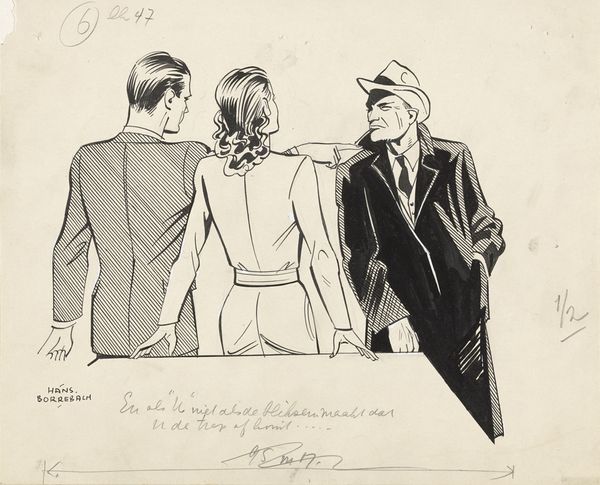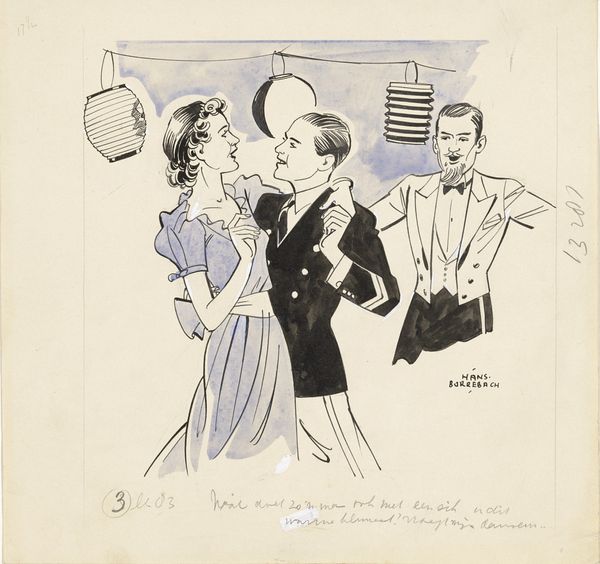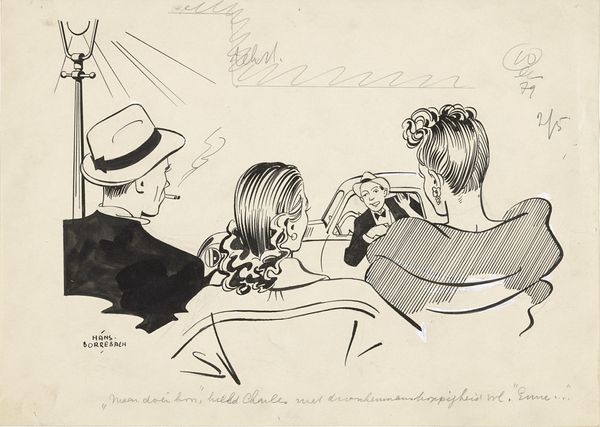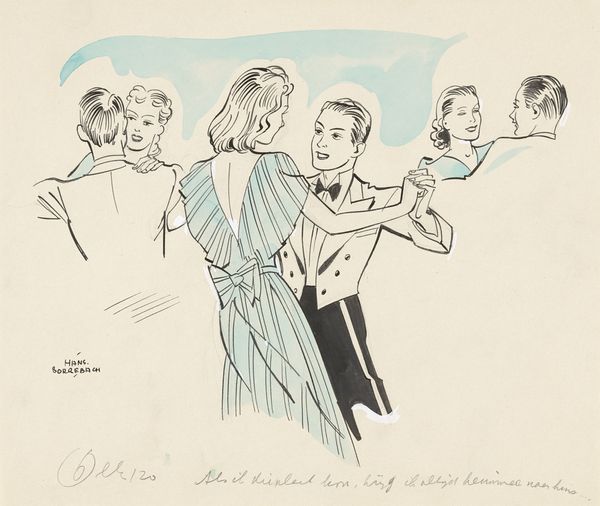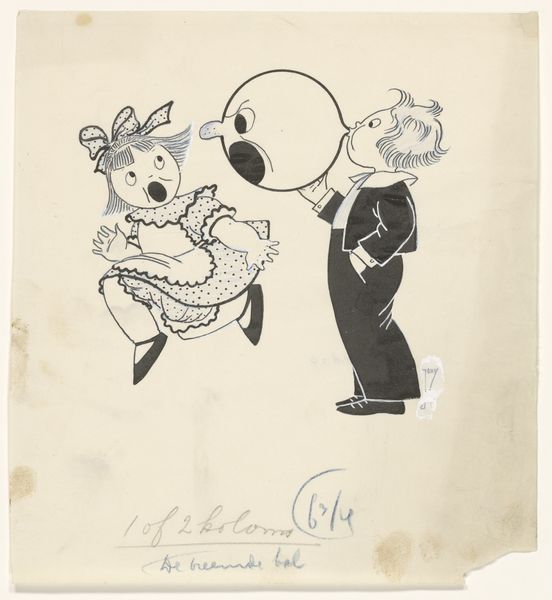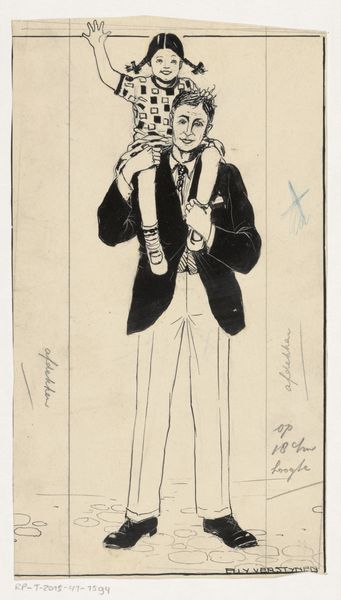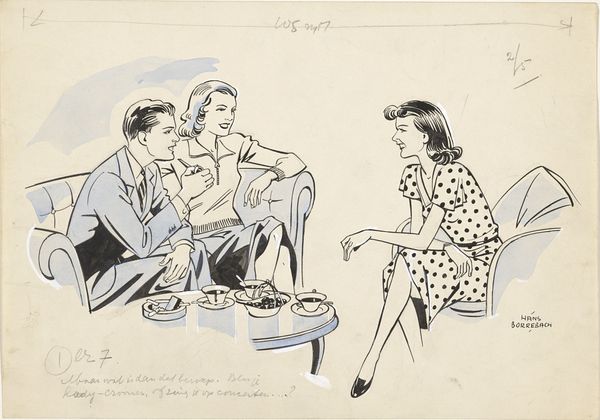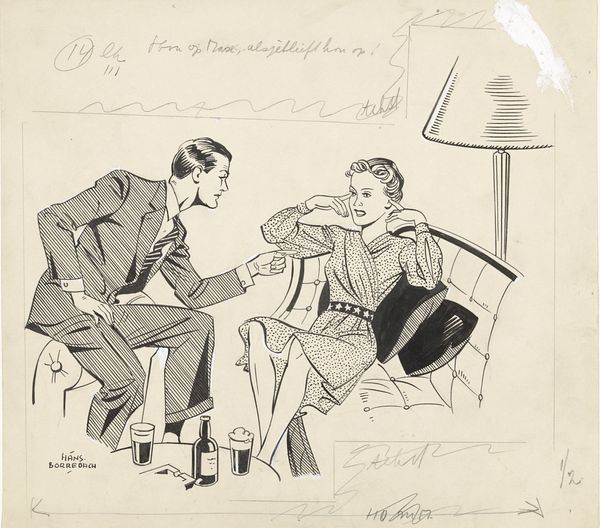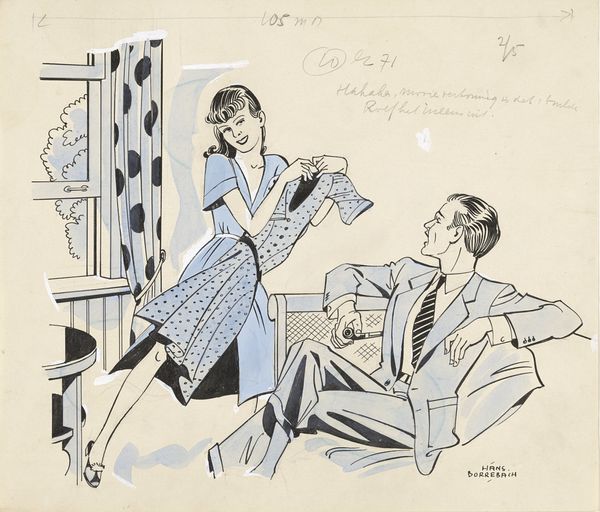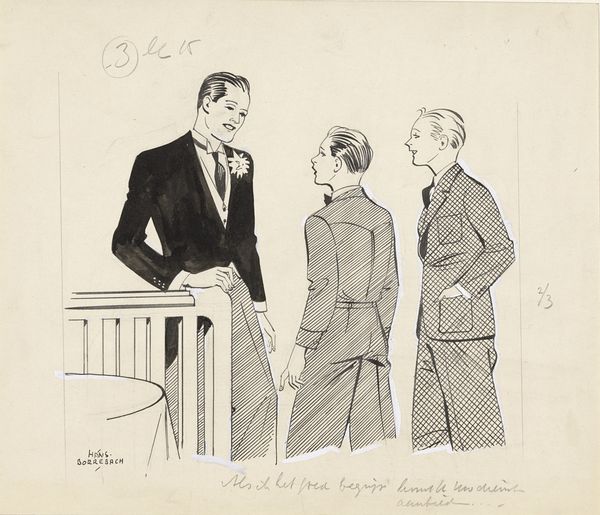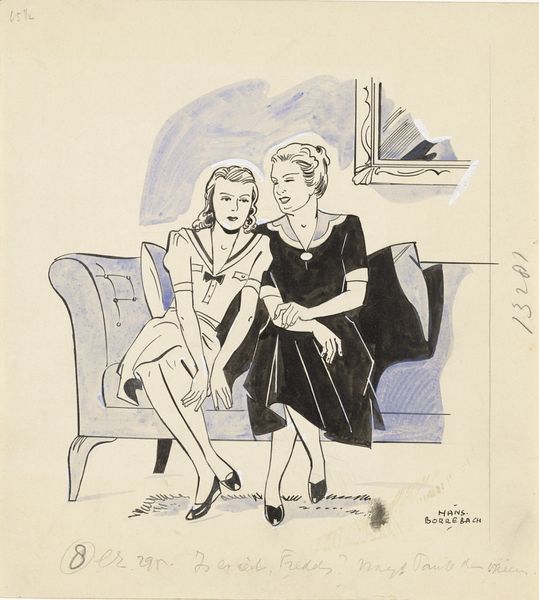
drawing, ink, pen
#
drawing
#
blue ink drawing
#
narrative-art
#
figuration
#
ink
#
intimism
#
pen
Dimensions: height 247 mm, width 239 mm
Copyright: Rijks Museum: Open Domain
Curator: Hans Borrebach's ink and pen drawing, "Pepita en Agmed in een theaterloge," created before 1948, invites us into a world of implied narrative. What is your first impression of the work? Editor: I’m immediately struck by the composition; the contrast of the crisp blacks against the stark white paper, and the strategic use of line to define form, really gives it a graphic, almost illustrative quality. There’s a dramatic feel here, heightened by the framing device. Curator: I see a staged intimacy, rife with social commentary. Borrebach, working before World War II ended, seems to capture a certain decadence, even an alienation, reflective of the period's anxieties. Editor: I'd say the figures are strategically placed to lead the eye. Observe how Borrebach’s use of hatching and cross-hatching sculpts the turbaned man’s tuxedo. Semiotically, the light emphasizes form and the social dynamics within this theatre box. Curator: Absolutely. This “theatreloge” is no neutral space. The gaze is paramount: who looks at whom, and what power dynamics are at play. Consider the two women seated in conversation with a man looming over them, seemingly controlling their experience, even perhaps whispering in their ears. We can trace a feminist thread. Editor: Yet, notice the stylistic consistency. Borrebach carefully regulates visual data by ensuring there’s a unifying pattern through all the objects presented in this drawing: the tassels hanging down the top, the dresses, or even the hairstyle of the central character. Curator: A pattern that underscores the rigid societal structures that were typical of this era. "Pepita en Agmed in een theaterloge" acts almost as a stage play in and of itself, rife with unstated dialogues, and challenges for us to disentangle. It reminds me a bit of some art deco works from that time in the ways it addresses race. Editor: Thinking of the composition, the foreground of those candles suggests some ritual element, and adds dimension as the eye moves around the page. I'm not sure whether I see more of the art or the artist in those shapes. It certainly shows sophistication in using a range of styles in a harmonious effect. Curator: Well, Borrebach gives us an invitation to reflect on not just what we are seeing, but also the circumstances under which such social dynamics existed. I think, through a historic perspective, we get a rather nuanced picture of gender and social identity at the time. Editor: And through visual analysis, we appreciate Borrebach’s mastery of line and form, creating a visually captivating composition within its cultural milieu.
Comments
No comments
Be the first to comment and join the conversation on the ultimate creative platform.

